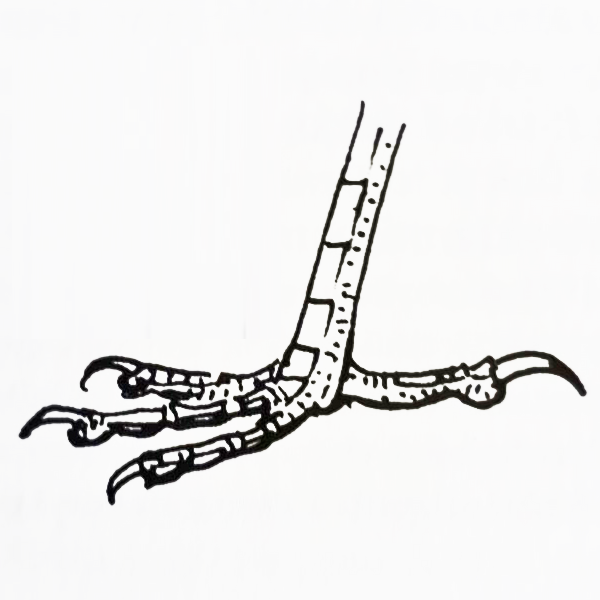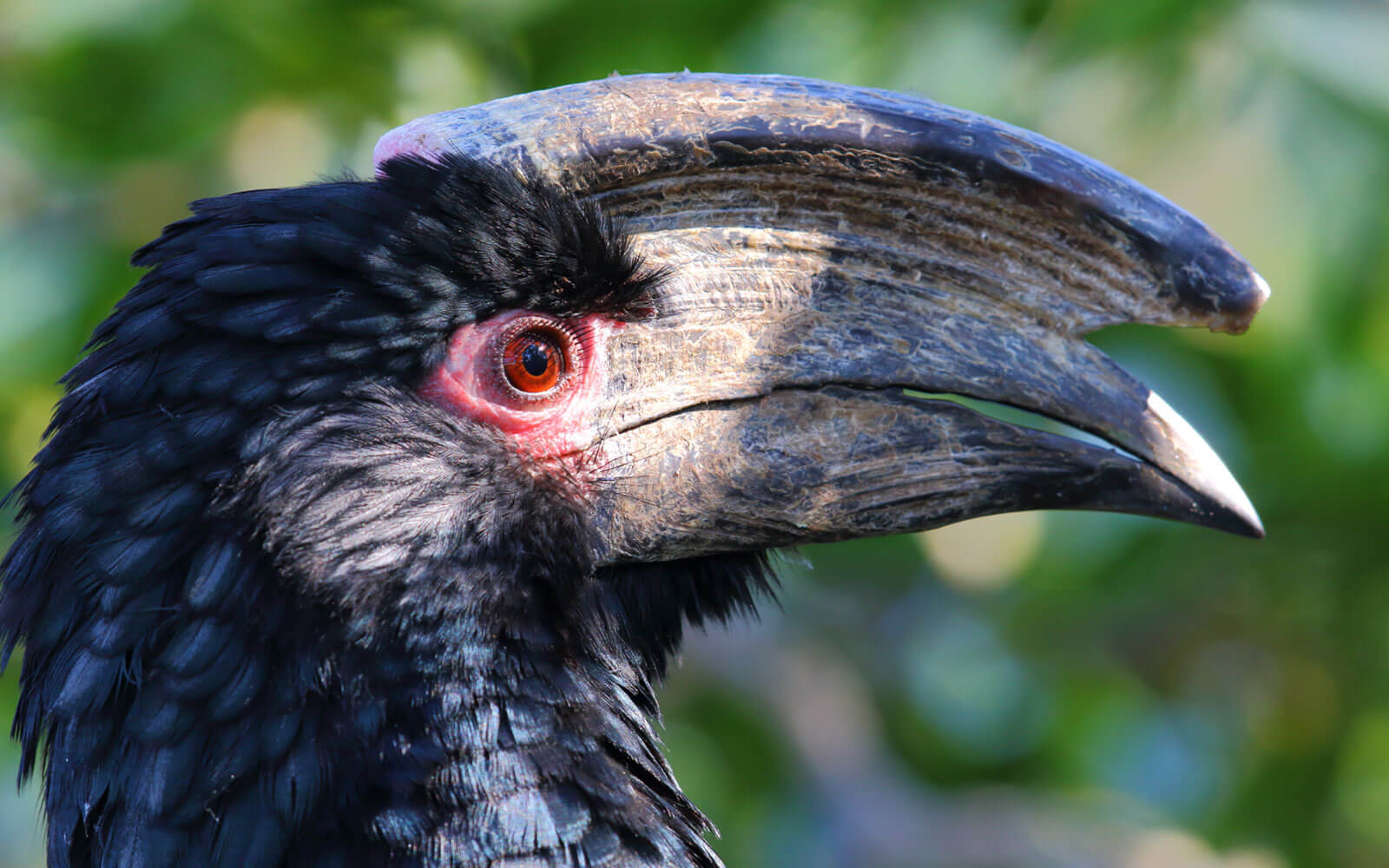As we continue our discussions on the birds we find in Kloof, we have learned quite a lot about their food, what they feed on and who feeds on them, and the strategies they adopt to survive.
We have learned that simply identifying birds soon develops into a hunger to know more. That has certainly been the case for me.
In this article we will be looking mostly at waterbirds – birds that make their livelihood in and around water – and will pick up on some unusual features and anomalies.
Grabbers and stabbers
For example, fish-eating birds can be divided into 2 groups, the ‘Grabbers’ and the ‘Stabbers’. They may live in the same habitat and look much the same – but have a look at the bill of the Reed Cormorant. It has a distinct hook at the end, a definite ‘Grabber’. The Darter, on the other hand, looks very similar except that it has a long, pointed, dagger for a bill with which the same fish could be speared – definitely a ‘Stabber’.

Reed Cormorant
Photo: David Allan

African Darter
Photo: Dave Rimmer
There are of course other identifying features which separate the species, for instance the neck thickness of the Cormorant is greater than that of the Darter. However, taking another look at the same 2 birds, you may be able to see that there is a difference in the webbing of their feet. They both have webbed feet, but the Cormorant has webbing spread between all 4 toes and the Darter over only 3 toes giving it a free ‘thumb’. You may see it better with these photos of the White-breasted Cormorant (another ‘grabber’) and the Darter (another ‘stabber’).

White-breasted Cormorant
Photo: David Allan

African Darter
Photo: John Oliver
So feet are another differentiator.
Foot structures
We expect water birds to have webbed feet, or at least those that paddle around in dams and ponds. Well, it appears that there are 4 types of foot structure for water birds:
1) Arisodactyl – the commonest form – no webbing – ideal for lily-walking.

Common Moorhen
Photo: David Allan

Black Crake
Photo: David Allan

African Jacana
Photo: David Allan
2) Webbed – for ducks – webbing spread between 3 toes. The 4th toe is free, much like a thumb.

Spur-winged Goose
Photo: Dave Rimmer

White-faced Duck
Photo: Dave Rimmer

Yellow-billed Duck
Photo: David Allan

African Black Duck
Photo: Dave Rimmer

African Darter
Photo: David Allan
3) Totipalmate – for Cormorants and Pelicans – webbing spread between all 4 toes. There is no free ‘thumb’.

Pink-backed Pelican
Photo: David Allan

Pink-backed Pelican
Photo: David Allan
4) Lobed – for Grebes, Coots and Finfoots – Instead of webbing the toes are ‘squashed’ lengthwise to create a flange effect.
Grebes and coots are excellent swimmers, both on and under the surface of the water, so the lobed alternative to webbed feet seems to work well.

Red-knobbed Coot lobed foot
Photo: David Allan

Photo: Red-knobbed Coot on land
Photo: Dave Rimmer

Red-knobbed Coot swimming
Photo: David Allan
Finding photos of Little Grebes showing their lobed feet was always going to be a problem, but miraculously Dave Rimmer had this photo of himself with Paul Bartho untangling a Little Grebe caught in a nylon fishing line!

Little Grebe swimming
Photo: Dave Rimmer

Little Grebe in nylon tangle
Photo: Dave Rimmer
*The Finfoot has not been reported in the Kloof area, but 14 sightings have been recorded at the nearby Inanda Dam. It has been included due to its curious lobed foot structure as well as its proximity to our area.

African Finfoot
Photo: Dave Rimmer
I have created a table below which compares the foot structures of the various Kloof waterbirds.
Foot structures of various Kloof waterbirds

Arisodactyl
- Common Moorhen
- Black Crake
- African Jacana

Webbed
- Egyptian Goose
- White-faced Whistling Duck
- Spur-winged Goose
- Yellow-billed Duck
- African Darter
- African Black Duck

Totipalmate
- Reed Cormorant
- White-breasted Cormorant
- Pink-backed Pelican

Lobed
- Red-knobbed Coot
- Little Grebe
- African Finfoot*
Sketches adapted from Roberts Birds of Southern Africa VII Edition.
Note that the Coot, which often shares the same habitat amongst the reeds of small dams with the similarly sized Common Moorhen, even sounding alike, has lobed feet rather than open feet. Curious.
Territorial threats
We regularly do our birding in the Iphithi Nature Reserve in Kloof, where there is normally a resident pair of Egyptian Geese. When all is calm and peaceful the pair look, well, normal, but as soon as another pair comes flying past there is a lot of cackling and honking.
What is most extraordinary is the aggressive attitude taken by the resident male. Apart from the noise he makes, he also shows off his upper wing coverts, flashing a warning signal – a bright white ‘flag’ appears on his side – presumably to show the intruder how fierce and big he is. Have a look yourself some time.

Egyptian Goose in relaxed mode
Photo: David Allan

Egyptian Goose in defensive mode
Photo: David Allan
Sense of taste
In our last article, headed What’s the bill, we referred to the role the bill plays in identifying birds in the field. There are also other interesting things to be found amongst the bills. Two of the more prominent bill owners in our area are the Trumpeter Hornbill and the Hadeda Ibis.
Trumpeter Hornbill

Trumpeter Hornbill
Photo: David Allan
The bill is not just a thing of beauty (to the beholder) and it obviously serves as a resonating chamber for its heartfelt cry which can be heard echoing over the forests, it’s favoured habitat. The casque is also useful for parting vegetation as it searches for fruit in the leafy tops of the forest. But much of this you could work out for yourself.
But there is another usefulness in that bill – it also houses a large tongue which it uses to get a good sense of taste of what it is eating.
The casque is extremely light weight and is not a burden to the long-suffering bird after all.
Hadeda Ibis

Hadeda Ibis
Photo: David Allan
We have featured the Hadeda a number of times in our articles, even though it is not a popular bird. However, it does have a number of talents which might take you by surprise.
That splendid bill is not just a thing of beauty (again, to the beholder) but it also houses a groove of live cells which reach all the way down to the tip. It is soft, pliable and grooved which feeds back information on both taste and smell. This enables it to judge whether the object it has found, as it pushes down into the soil, is edible or not.
Why so strange? Because strange ideas do sometimes work, it seems.

About the author
Peter was born and raised in the sub-tropical haven of the then Lourenço Marques, now Maputo but was schooled in KZN. With a Mechanical Engineering degree from Cambridge he focused on his engineering career until moving to Durban in the mid 70’s and immediately developed an interest in birds. He has travelled extensively throughout southern Africa on birding holidays which helped him reach his target of 700 bird sightings. More recently he has turned his focus to bird atlasing and is a valuable contributor to the Southern African Bird Atlas Project. He is also a one of the organisers of the Krantzkloof Bird Club.